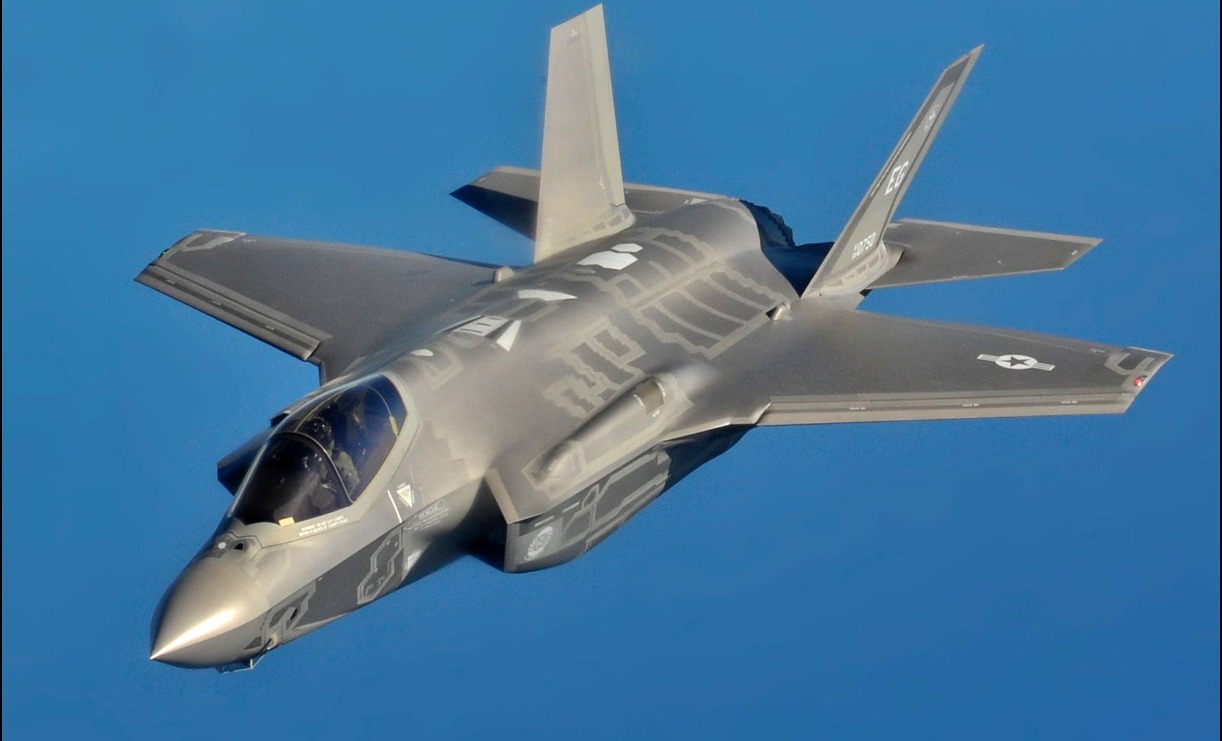Why Won't America Sell F-35 Stealth Fighters to Taiwan?
A Taipei-based news outlet reported months back that the U.S. has once again denied Taiwan’s request for F-35 fighter jets.
A Taipei-based news outlet reported months back that the U.S. has once again denied Taiwan’s request for F-35 fighter jets.
According to Taiwan Plus, American officials have only sold F-16 Fighting Falcons to their Taiwanese counterparts, which have similar capabilities to their homegrown AIDC F-CK-1 Ching-Kuo platform.
Last month, Taipei and Washington agreed on a whopping $420 million deal for maintaining fighter airframes operated by Taiwan’s air force. In light of China’s escalating hostilities in the South China Sea and over Taiwan, Taipei has relied more on American air defense capabilities to secure its airspace.
However, the U.S. has drawn a red line when it comes to providing Taiwan with its stealth fighter F-22 Raptor and F-35 Joint Strike Fighter platforms. Many Western nations refuse to sell advanced fifth-generation jets to Taipei over fears of angering Beijing and concern that the fighters’ sensitive technology could fall into the hands of the People’s Republic of China (PRC).
As explained by an aviation expert in an Aviation Geek Club piece, the U.S. is fairly confident that any weapons it provides Taiwan will ultimately be seized by the People’s Liberation Army (PLA) if kinetic warfare does erupt. During the Chinese civil war in the late 1940s, the U.S. delivered billions of dollars worth of its top-of-the-line equipment and weaponry, which eventually made its way to the PLA.
A super simple summary of the cross-strait tensions
The Chinese government views Taiwan as a renegade province and has asserted its intention to militarily “reunify” with the island. Taipei views itself as a sovereign nation with its own constitution that it has governed with since the first half of the last century. Officially recognized as the Republic of China (ROC), the island is separated from mainland China by the Taiwan Strait. Since the nation is positioned as the “first island chain” in an area the U.S. maintains is paramount for national security purposes, aiding Taiwan’s independence from China is significant.
Since 2016, tensions between Taipei and Beijing have spiked following the election of Taiwanese President Tsai Ing-wen. Unlike her predecessor, Tsai has not promoted strengthened relations with the mainland. A major sticking point in the conflict has been differing understandings of the 1992 Consensus, which was reached by the former Kuomingtang Party in Taiwan and the Chinese Communist Party.
According to the Council on Foreign Relations, the PRC’s takeaway from the 1992 Consensus is that “the two sides of the strait belong to one China and would work together to seek national reunification.” For Taiwan, it means “one China, different interpretations,” with the ROC standing as the “one China.”
The US has aided Taipei amidst escalating tensions with Beijing
Bound by the 1979 Taiwan Relations Act, which was intended to “make available to Taiwan such defense articles and defense services in such quantity as may be necessary to enable Taiwan to maintain a sufficient self-defense capability,” the U.S. delivered F-16s in the 1990s.
Without more advanced fifth-generation fighters in its arsenal, Taiwan has settled on upgrading its current fleet. Taiwan’s air force has been enhancing older F-16A/B variants to new Viper F-16Vs, featuring sophisticated radar systems and new mission computers. According to CNN, Taipei has also signed a deal with manufacturer Lockheed Martin to purchase 66 additional Viper airframes.
Why Taiwan will likely never procure the F-35 Joint Strike Fighter
While the F-16 is a formidable platform, Taipei has its eyes set on the F-35 Joint Strike Fighter – and for good reason. Many industry experts and aviation buffs consider the newest American fifth-generation fighter to be the greatest stealth airframe on the planet.
The fighter is reportedly unrivaled by its near peers in terms of sensing, computing, and weapons systems. While the F-35 is often and rightly considered to be a stealth-heavy fighter, the jet also has another side. In combat, the fighter can convert to a “bomb truck” also known as “Beast Mode.”
As explained by the Aviation Geek Club, “In stealth mode, the F-35 can carry 5,700 pounds of internal ordnance. Once air dominance is established, the F-35 converts to beast mode, carrying up to 22,000 pounds of combined internal and external weapons.”

The F-35 can sport two AMRAAMs, six JDAMs, and two Sidewinders when in “Beast Mode” configuration.
While the F-35 is a powerful airframe that has been exported to many foreign air forces in recent years, Taiwan is unlikely to ever make the list of recipients.
For good or for ill, America’s concern that the PRC ultimately acquire the Joint Strike Fighter’s secretive technology is perhaps enough reason to block this theoretical deal from ever coming to fruition.
Maya Carlin is an analyst with the Center for Security Policy and a former Anna Sobol Levy Fellow at IDC Herzliya in Israel. She has by-lines in many publications, including The National Interest, Jerusalem Post, and Times of Israel. You can follow her on Twitter: @MayaCarlin.
Image Credit: All Images Creative Commons.

